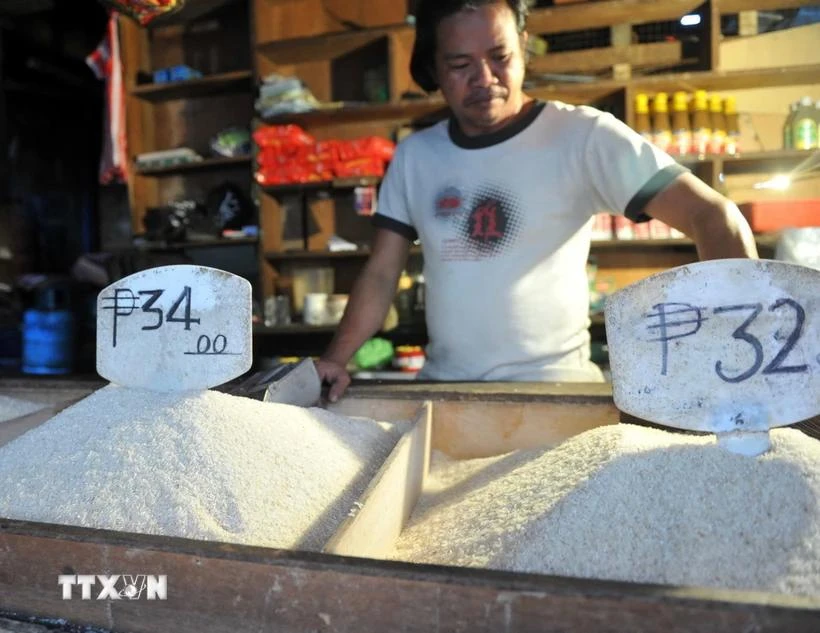Philippine consumers spend less on essentials, more on nonessential items
Philippine consumers are now spending less on essential goods and services, and consuming more of nonessential items – a shift that’s not surprising as the country moves closer to “upper-middle income” economy status, HSBC Global Research said.
A rice store in Manila, the Philippines (Photo: AFP/VNA)
In a May 30 report, HSBC noted a “substantial deceleration” in the average growth of food, clothing, and household furnishing expenditure in this country last year.
This was in stark contrast to more than 10% growth in consumer spending on restaurants, hotels, and recreational goods as well as toys, instruments, books, and services like gyms. Transport, which can be a mix of both essential and nonessential expenses, is also growing by “double-digits”, HSBC said.
Aris Dacanay, economist at HSBC, said the shift in consumer preferences is expected as the Philippines is working on its goal to become an upper-middle income economy.
Even in challenging times, Philippine consumers have gone beyond covering the bare essentials and are now spending on goods and services that make daily living more convenient and, perhaps, more fun, Dacanay said.
This suggests that when inflation declines, overall household consumption will likely pick up, he added.
Such an outlook is seen to bode well for a country where consumer spending accounts for over 70% of gross domestic product.
Growth of household spending in the Philippines eased to 4.6 % in the first quarter, the weakest reading since the 4.8% contraction at the height of the COVID-19 pandemic in the first quarter of 2021, statistics show./.
VNA
 Seminar seeks ways to boost ASEAN - Latin America connectivity
Seminar seeks ways to boost ASEAN - Latin America connectivity
 Indonesia seeks India's help in health education
Indonesia seeks India's help in health education
 Indonesia named world's most generous country in 2024
Indonesia named world's most generous country in 2024
 Philippines: Over-4m-high floodwaters make thousands of houses submerged
Philippines: Over-4m-high floodwaters make thousands of houses submerged
 Singapore’s public sector records carbon reduction in 2023
Singapore’s public sector records carbon reduction in 2023
 Pressure facing the EU on its growth track
Pressure facing the EU on its growth track
 Efforts boosted to combat transnational organised crime
Efforts boosted to combat transnational organised crime
 Nearly 200 terror suspects arrested in Indonesia in two years
Nearly 200 terror suspects arrested in Indonesia in two years
 Vietravel launches tourism joint venture in India
Vietravel launches tourism joint venture in India
 Vietnam willing to enhance int'l cooperation in transnational crime combat
Vietnam willing to enhance int'l cooperation in transnational crime combat




